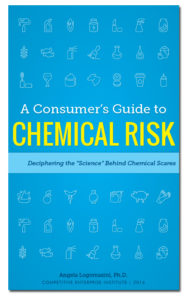Sometimes green activists attack chemicals as “toxic” or “hazardous,” which tells us nothing about actual risk, although sounds pretty scary.But simply because a chemical might cause harm at high exposure levels, does not mean we need to worry about extremely low, real-world exposures. After all, it the dose that makes the poison.
But that reality does not prevent activists from producing alarming rhetoric. For example, activists attack the use of pesticides to control the deadly mosquito-transmitted West Nile Virus, exclaiming that the chemicals are “toxic.”
One anti-pesticide group explained that it “opposes toxic methods to eradicate adult mosquitoes,” in part because “[t]he U.S. Environmental Protection Agency says that it is illegal to call these pesticides safe.”(1) Pesticides are indeed designed to be toxic—to bugs! That does not mean that low-level exposures to humans are much of a concern, despite suggestions to the contrary.
By suggesting that it is not legal or appropriate to call a pesticide “safe,” activists create the impression that these products should be feared, even when used appropriately. In reality, it is not illegal for anyone to assert that a pesticide is safe when used appropriately. Federal law regulates how manufacturers may label or advertise their pesticide products; it is not designed to suggest these products pose unacceptable risks. In fact, EPA labeling mandates are designed to ensure the products pose negligible risks when used according to label directions.(2)
Similarly, consider the following misleading comment by Dr. Philip Landrigan’s of the Mount Sinai School of Medicine regarding one of the key pesticides used for mosquito control: “Malathion is as bad as it gets…There is no such thing as a safe pesticide. It’s a matter of looking at benefits.”(3)
What does “as bad as it gets” really mean? Nothing considering the pesticides used for spraying poses insignificant risks to humans. All he is saying is that it is the “worst risk” among negligible risks. However, Dr. Landrigan is known for making anti-pesticide claims, so the scary implications of his statement may well be intentional.
For more details on public health uses of pesticides see the fact sheet on this website and full study on the topic on cei.org. Browse the terms on the sidebar of this webpage for more details about chemicals and science and/or download a copy of A Consumer’s Guide to Chemical Risk: Deciphering the “Science” Behind Chemical Scares.
(1) Asael Sala, “Pesticides Being Proposed for Aerial Spraying Over South Sacramento County Among the Most Toxic,” Sacramento Press, June 11, 2012.
(2) EPA explains on its website: “Pesticide product labels provide critical information about how to safely handle and use pesticide products, “Pesticide Product Labels,” page last updated on December 11, 2013, accessed December 18, 2013.
(3) Julie Deardorff and Karen Mellen, “Metro Spraying Targeting Hosts of Nile Virus,” Chicago Tribune, August 21, 2002.


